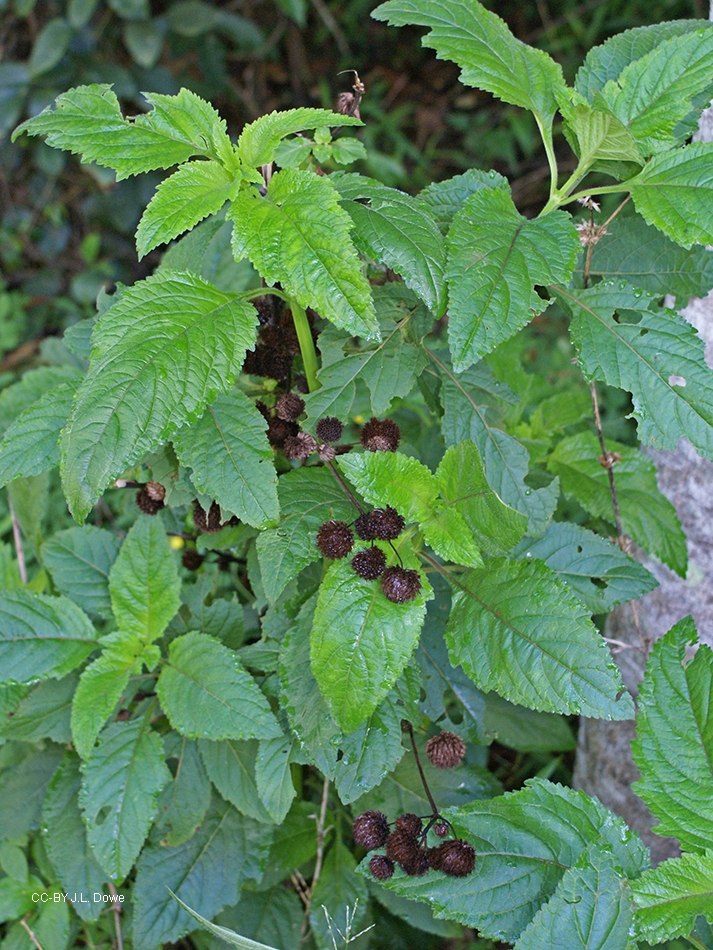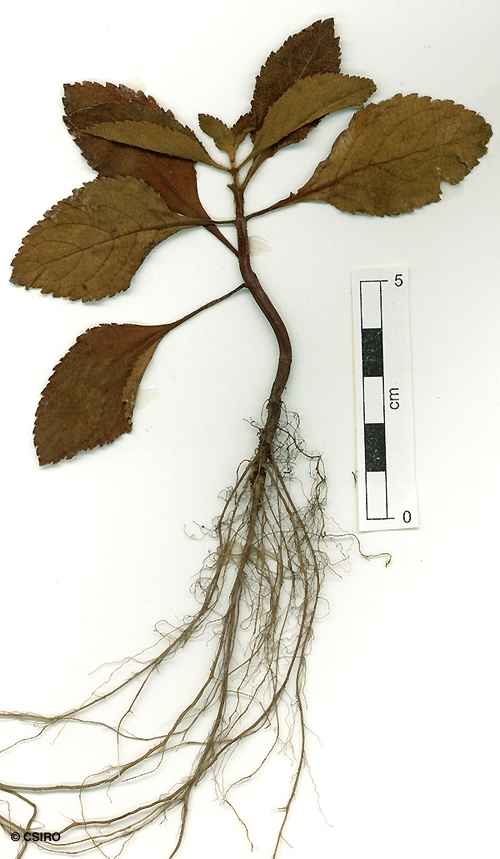Australian Tropical Rainforest Plants - Online edition
Hyptis capitata Jacq.





Jacquin, N.J. von (1787) Collectanea 1 : 102. Type: In insula San Domingo sponte crescit.
Knobweed; Hyptis
Flowers and fruits as a shrub about 1-2 m tall.
Leaf bearing twigs +/- 4-angled, leaves and stems emit a strong odour when crushed. Leaf blades about 6-14 x 1.5-6 cm with numerous pale glands visible on the underside. Upper surface of the leaf blade clothed in quite stout septate hairs. Hairs on the underside of the leaf blade much more slender than those on the upper surface.
Calyx pubescent, persistent, enclosing the nutlets. Nutlets +/- ovoid, about 1.2-2 mm long with a bilobed scar at the base. Nutlets not swelling or becoming transformed in any way when boiled in water.
Cotyledons about 4-6 x 7 mm, petiole as long as or longer than the cotyledon blade. Stem above the cotyledons +/- square in transverse section, hypocotyl terete. Stout septate hairs present on the upper surface of the first pair of leaves, leaf margins toothed. At the tenth leaf stage: leaf blade about 9-10 x 4-5 cm with stout septate hairs present on the upper surface. Stem 4-angled, corners pubescent, more so than the rest of the stem. Seed germination time 7 to 26 days.
This species may have medicinal properties.





